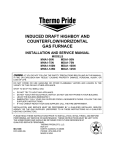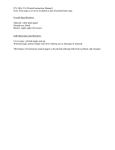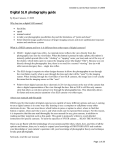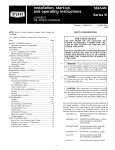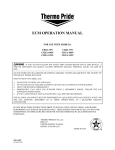Download Mid Efficiency Gas Furnace Owners Manual
Transcript
INDUCED DRAFT HIGHBOY AND COUNTERFLOW/HORIZONTAL GAS FURNACE USERS INFORMATION MANUAL MODELS FOR USE WITH NATURAL GAS MHA-50N, MHA-75N, MHA-100N, MHA-125N, MDA-50N, MDA-75N, MDA-100N, MDA-125N FOR USE WITH L.P. GAS (PROPANE) MHA-50P, MHA-75P, MHA-100P, MHA-125P, MDA-50P, MDA-75P, MDA-100P, MDA-125P : IF YOU DO NOT FOLLOW THE SAFETY PRECAUTIONS BELOW AND IN THIS MANUAL, A FIRE OR EXPLOSION MAY RESULT CAUSING PROPERTY DAMAGE, PERSONAL INJURY, OR LOSS OF LIFE. DO NOT STORE OR USE GASOLINE OR OTHER FLAMMABLE VAPORS AND LIQUIDS IN THE VICINITY OF THIS OR ANY OTHER APPLIANCE. WHAT TO DO IF YOU SMELL GAS: • • • • • DO NOT TRY TO LIGHT ANY APPLIANCE. DO NOT TOUCH ANY ELECTRICAL SWITCH; DO NOT USE ANY PHONE IN YOUR BUILDING. LEAVE THE BUILDING IMMEDIATELY. IMMEDIATELY CALL YOUR GAS SUPPLIER FROM A NEIGHBOR’S PHONE. FOLLOW THE GAS SUPPLIER’S INSTRUCTIONS. IF YOU CANNOT REACH YOUR GAS SUPPLIER; CALL THE FIRE DEPARTMENT. INSTALLATION AND SERVICE MUST BE PERFORMED BY A QUALIFIED INSTALLER, SERVICE AGENCY OR THE GAS SUPPLIER. (REFERRED TO IN THESE INSTRUCTIONS AS A QUALIFIED HEATING CONTRACTOR). PLEASE READ THESE INSTRUCTIONS PRIOR TO INITIAL FIRING, OPERATING THE FURNACE, AND BEFORE PERFORMING ANY MAINTENANCE. THESE INSTRUCTIONS MUST BE LEFT WITH THE HOMEOWNER AND SHOULD BE RETAINED FOR FUTURE REFERENCE BY THE HOMEOWNER/USER. THERMO PRODUCTS, LLC. BOX 217 MG-994 NORTH JUDSON, IN 46366 ECN 4199-MI 05/00 PHONE: (219) 896-2133 MADE IN USA INDEX SECTION PAGE I. SAFETY INFORMATION 1 II. GENERAL INSTRUCTIONS 5 III. FURNACE OPERATION 8 A. WARNINGS AND OPERATION B. OPERATING INSTRUCTIONS C. SHUTDOWN PROCEDURE IV. HOMEOWNER/USER MAINTENANCE INSTRUCTIONS (ROUTINE MAINTENANCE) A. ANNUAL INSPECTION B. FILTER MAINTENANCE PROCEDURE C. VISUAL INSPECTION PROCEDURE 8 9 10 10 10 10 12 All installations and services must be performed by qualified service personnel. I. SAFETY INFORMATION This page and the following page contain reproductions of the various instruction and warning labels placed on the Thermo Pride Sectional Gas Furnaces. Please read and comply with the contents of these labels. 1 All installations and services must be performed by qualified service personnel. 2 All installations and services must be performed by qualified service personnel. The following warnings and cautions are found throughout the Thermo Pride Sectional Gas Furnace Manual. Please read and comply with the statements below. : IF YOU DO NOT FOLLOW THE SAFETY PRECAUTIONS BELOW AND IN THIS MANUAL, A FIRE OR EXPLOSION MAY RESULT CAUSING PROPERTY DAMAGE, PERSONAL INJURY, OR LOSS OF LIFE. Property damage, personal injury or loss of life could result from repair or service of this furnace by anyone other than a qualified heating contractor. Only the routine maintenance described in this manual may be performed by the user. This furnace operates by burning gas inside your home. This creates the possibility of fire or an explosion which could result in serious injury or death. You must read and follow all of these safety precautions to help ensure safe operation of your furnace and to prevent a life-threatening fire or explosion from ever occurring. To avoid injury from moving parts and to avoid electrical shock, shut off power to the furnace before removing the blower compartment door. : Do not block or obstruct air openings on the furnace or air openings communicating with the area in which the furnace is installed. : If you suspect there is a problem with the furnace, its venting system or any other related problem, immediately contact a qualified service agency. : In the event your furnace fails to operate, do not attempt to put the furnace into operation. Contact a qualified heating contractor to service the furnace. : The furnace must have an adequate supply of fresh and clean air for safe combustion. If chemical vapors get into the furnace, hazardous fumes may result. Pay attention to the safety rules below to prevent you and your family from being injured by these hazardous chemical vapors. : If you do not follow these instructions exactly, a fire or explosion may result causing property damage, personal injury, or loss of life. : Homeowners attempting service other than covered as homeowner/user maintenance may cause conditions which could result in personal injury or property damage. 3 All installations and services must be performed by qualified service personnel. : Shut off the power to the furnace before removing blower compartment door to avoid injury from moving parts. : This furnace is not to be used for temporary heating of buildings or structures under construction. : CALL A QUALIFIED SUSPECTED DEFICIENCIES. (DO YOURSELF!) HEATING CONTRACTOR TO REPORT NOT ATTEMPT TO MAKE REPAIRS : Failure to keep the condensate trap filled may allow flue gases to enter the living space. NOTE: This warning only applies to sidewall venting. : Because of the potential of odorant fade, a gas leak may not be detected by smell. If this furnace is installed below grade, contact your gas supplier for a gas detector. 4 All installations and services must be performed by qualified service personnel. II. GENERAL INSTRUCTIONS 1. Property damage, personal injury or loss of life could result from repair or service of this furnace by anyone other than a qualified heating contractor. Only the routine maintenance described in this manual may be performed by the user. 2. This furnace operates by burning gas inside your home. This creates the possibility of fire or an explosion which could result in serious injury or death. You must read and follow all of these safety precautions to help ensure safe operation of your furnace and to prevent a life-threatening fire or explosion from ever occurring. 3. POSSIBILITY OF BURNS, CUTS OR ELECTRICAL INJURY To avoid injury from moving parts and to avoid electrical shock, shut off power to the furnace before removing the blower compartment door. • Do not perform any maintenance on the furnace while it is operating. Read and follow the maintenance instructions provided with this furnace before beginning any maintenance work. • Care must be taken whenever the doors are removed from this appliance. This may expose sharp edges or points which could cause cuts, hot surfaces which could cause burns, and electrical circuits which could cause shocks. • Instruct children on the safety hazards associated with furnaces. Keep children away from the furnace at all times. 4. Keep furnace free and clear of combustible materials, gasoline and other flammable liquids and vapors. Do not store combustible materials near the furnace. The furnace must have adequate clearances from all combustible materials such as clothing, paper, cardboard, wood, cleaning materials or flammable liquids to prevent them from igniting. 5. For safe and proper operation, the furnace needs air for combustion and ventilation. : Do not block or obstruct air openings on the furnace or air openings communicating with the area in which the furnace is installed. • Do not operate this furnace without provisions for an adequate combustion air supply. Keep all insulation materials at least twelve inches away from all burner openings. Do not block or cover any openings which supply combustion and ventilation air to the furnace. Follow all instructions in this manual for providing ample combustion and ventilation air. 5 All installations and services must be performed by qualified service personnel. IMPORTANT: For sidewall vented furnaces, do not allow the outside vent terminal to be blocked or obstructed by vegetation, ice, snow or any other materials. 6. Should this unit be installed in an attic or other insulated area or if the area is insulated after the furnace is installed, the furnace area must be examined and kept free and clear of the insulating material and any fibers that may have come loose. Remember some insulating materials are combustible. 7. No attempt should be made to restart the unit in the event that the gas to the main burner has been shut off. Contact a qualified heating contractor before restarting the furnace. 8. The furnace should be inspected annually by a qualified heating contractor. 9. Do not use this furnace if any part has been under water. Immediately call a qualified heating contractor to inspect the furnace and to replace any part of the control system and any gas control which has been under water. 10. Should overheating occur or the gas supply fail to shut off, shut off the manual gas valve to the furnace before shutting off the electrical supply. : If you suspect there is a problem with the furnace, its venting system or any other related problem, immediately contact a qualified service agency. 11. Check carefully for gas before lighting a furnace. Some gas is heavier than air and may settle near the ground. Search for gas odor by sniffing at ground level in the area of the furnace. 12. Figure 1 illustrates a typical furnace installation and the typical position of the components referenced in these instructions. 13. Your furnace should be described by the model number and serial number when contacting a qualified heating contractor. This important information is located on the rating plate behind the front door. (See Figure 1). 14. This furnace is equipped with a safety feature which will not allow the furnace to be operated if the outlet vent to the appliance is blocked. : In the event your furnace fails to operate, do not attempt to put the furnace into operation. Contact a qualified heating contractor to service the furnace. 6 All installations and services must be performed by qualified service personnel. Figure 1. 7 All installations and services must be performed by qualified service personnel. 15. POSSIBLE HAZARD FROM CHEMICAL VAPORS : The furnace must have an adequate supply of fresh and clean air for safe combustion. If chemical vapors get into the furnace, hazardous fumes may result. Pay attention to the safety rules below to prevent you and your family from being injured by these hazardous chemical vapors. • Aerosol spray propellants and volatile compounds (cleaners, chlorine-based chemicals, refrigerants, and others) may be highly flammable. They may also create corrosive compounds such as hydrochloric acid when exposed to the furnace combustion products. These fumes are hazardous and can also cause the furnace to fail. • Typical locations and chemicals with potentially corrosive vapors are beauty and barber shops, photo processing labs, cleaning establishments, laundries and dry cleaners, liquid and powdered bleaches, swimming pool chemicals, cleaning solvents, refrigerator and air conditioning refrigerants, calcium and sodium chloride, waxes and process chemicals. • All of the above materials are corrosive at very low concentration levels with little or no odor to reveal their presence. Do not store these chemicals near the furnace. If operation in this type of area is necessary, a qualified heating contractor must be contacted to install a means of providing uncontaminated combustion air from outside sources. III. FURNACE OPERATION A. WARNINGS BEFORE OPERATION FOR YOUR SAFETY, READ BEFORE OPERATING : If you do not follow these instructions exactly, a fire or explosion may result causing property damage, personal injury, or loss of life. A. This appliance does not have a pilot. It is equipped with an ignition device which automatically lights the burner. Do not try to light the burner by hand. B. BEFORE OPERATING - smell all around the appliance area for gas. Be sure to smell next to the floor because some gases are heavier than air and will settle on the floor. WHAT TO DO IF YOU SMELL GAS * Do not try to light any appliance. * Do not touch any electric switch; do not use any phone in your building. * Immediately call your gas supplier from your neighbor's phone. * Follow the gas suppliers instructions. * If you cannot reach your gas supplier, call the fire department. C. Use only your hand to push in or turn the gas control knob. Never use tools. If the knob will not push in or turn by hand, don't try to repair it, call a qualified heating contractor. Force or attempted repair may result in a fire or explosion. 8 All installations and services must be performed by qualified service personnel. B. OPERATING INSTRUCTIONS TO START THE FURNACE: 1. Please read the safety information in this book before operating furnace. 2. Set the thermostat to the lowest setting. 3. Turn off all electric power to the appliance. 4. This appliance is equipped with an ignition device which automatically lights the burner. Do not try to light the burner by hand. 5. Remove front door. 6. Turn the knob on combination gas valve to the full off position. Figure 2. 7. Wait five (5) minutes to clear out any gas. Then smell for gas including near the floor. If you then smell gas, STOP! Follow Step A in the previous safety information. If you don't smell gas, go to the next step. 8. Turn the knob on combination gas valve to the ON position. 9. Replace front door. 10. Turn on electric power to the appliance. 11. Set thermostat to desired setting. 12. If the appliance will not operate, follow the instructions "To Turn Off Gas To Appliance" and call a qualified heating contractor or gas supplier. 9 All installations and services must be performed by qualified service personnel. C. SHUTDOWN PROCEDURE TO TURN OFF GAS TO FURNACE 1. Set the thermostat to lowest setting. 2. Turn off the electric power to the appliance if service is to be performed. 3. Remove front door. 4. Turn the knob on the combination valve to the full OFF position. 5. Replace front door. IV. HOMEOWNER/USER MAINTENANCE INSTRUCTIONS (ROUTINE MAINTENANCE) The following maintenance procedures should be performed by the homeowner/user during the heating season. : Homeowners attempting service other than covered as homeowner/user maintenance may cause conditions which could result in personal injury or property damage. To avoid injury from moving parts and to avoid electrical shock, shut off power to the furnace before removing the blower compartment door. A. ANNUAL INSPECTION The homeowner must have this furnace professionally inspected at the beginning of each heating season by a qualified heating contractor to ensure proper operation. Instructions for the dealer maintenance needed for this furnace can be found in the "Installation and Service Manual." NOTICE: This furnace has been shipped from the factory with a permanently lubricated circulating air blower motor. Any maintenance to this blower motor is to be performed only by a qualified service agency. B. FILTER MAINTENANCE PROCEDURE The return air filter provided with this unit is a re-usable type filter. This filter should be inspected monthly and when dirty, cleaned or replaced if necessary, to assure proper furnace operation. Follow the cleaning, removal and replacement procedure below. 10 All installations and services must be performed by qualified service personnel. NOTE: If the furnace is installed in a dusty environment, dust levels must be much higher than normal. The filter must be inspected daily and cleaned as needed until dusty conditions have been eliminated. : This furnace is not to be used for temporary heating of buildings or structures under construction. Figure 3. MHA FURNACE The filter rack or drop chute will be located between the return air plenum and the return air opening of the furnace (See Figure 3). Slide dirty filter out of the filter rack. Clean the filter by vacuuming, rinsing with tap water, hosing or dipping in an ordinary detergent solution. Replace the completely dry filter in the rack. The mesh side of the filter must be installed towards the furnace after cleaning. MDA FURNACE TURN OFF POWER TO FURNACE. The filter rack will be located on top of the furnace inside the return air duct using either a V-rack or a drop chute similar to one shown for the MHA in Figure 3. To change filter with a front load type drop chute, follow the instructions for a MHA. To change filters using the V-rack, remove the furnace front door and remove the filters through the blower opening (or in the event access slots are provided in the plenum, pull the filters directly out through these slots). Clean filters by vacuuming, tap water rinsing, hosing or dipping in an ordinary detergent solution. After cleaning, replace completely dry filter, mesh side down on the filter rack on the top of the furnace. Replace front door. Turn on power to furnace. 11 All installations and services must be performed by qualified service personnel. FILTER REPLACEMENT See Table 1 for minimum heating filter areas required for the different types of filters available should the filter used require replacement. If the unit is equipped with cooling, contact your installer or a qualified service person to determine the minimum filter area required for the different filter types and your cooling system. MINIMUM FILTER AREA REQUIRED (LENGTH X WIDTH, SQ. IN.) FILTER TYPE *THERMO PRODUCTS SUPPLIED PERMANENT FILTER STANDARD PERMANENT FILTER DISPOSABLE TYPE FILTER MAXIMUM RATE AIR VELOCITY FURNACE MODEL 600 FT./MIN. MHA,MDA50 172 IN.2 MHA,MDA75 254 IN.2 MHA,MDA100 328 IN.2 MHA,MDA125 402 IN.2 500 FT./MIN. 208 IN.2 304 IN.2 394 IN.2 484 IN.2 300 FT./MIN. 344 IN.2 506 IN.2 656 IN.2 804 IN.2 TABLE 1 * The Thermo Products supplied filter can be cut to size to fit other filter retention systems as long as the minimum size requirement is met. NOTICE: Any internal stiffeners used in the filter must not be removed, although they can be cut to size as needed. C. VISUAL INSPECTION PROCEDURE It is recommended that the homeowner/user conduct the following periodic visual inspection of the furnace at the start of the heating season and monthly during the heating season. CALL A QUALIFIED SUSPECTED DEFICIENCIES. (DO YOURSELF!) : HEATING CONTRACTOR TO REPORT NOT ATTEMPT TO MAKE REPAIRS 1. Turn off power to furnace. 2. Flue Pipe Connection & Chimney: Visually check flue pipe and chimney for tightness, blockage and corrosion. If fittings are loose or if blockage or corrosion is suspected to be a problem, contact a qualified heating contractor. Make sure horizontal runs of the flue have an upward slope away from furnace of 1/4" per foot minimum and are physically sound without holes, cracks or signs of corrosion. There should be no sign of moisture or vent gas leakage at any vent connection. 12 All installations and services must be performed by qualified service personnel. ADDITIONAL REQUIREMENTS OF FURNACES VENTED THROUGH THE SIDE OF THE HOUSE WITH NO CHIMNEY. a. Such horizontally vented furnaces should also be inspected to make sure that all vent joints are sealed and that the outside vent terminal is clear and free of obstruction by ice, snow or debris. Any obstruction of the terminal should be carefully removed without damaging the vent terminal. If ice has formed on the terminal itself, it should be removed using a blow dryer. b. The sidewall venting kit (SWGII Power Venter) manufacturer’s instructions to be supplied by Field Controls. Use information must be supplied by the installer then read and understood by the user. 3. Return Air Duct Connection: Check to see if it is: (1). physically sound (2). sealed to the furnace casing and (3). terminates outside the space containing the furnace. 4. Make sure the furnace is sealed to the base (if applicable) without sagging, cracks or gaps. Make sure there are no signs of deterioration of the furnace or base. 5. Remove vestibule door and inspect control compartment for signs of damaged or unusually worn wiring, condensation, sooting or other damage or deterioration. 6. Restore power to the furnace. Follow the operating instructions to light furnace. 7. Make sure the burner flames are in good adjustment (See Figure 5). Burner flames should not impinge or fire against the side of the tube opening. NOTICE: It is not unusual to have orangish flames visible in the tube for LP gas. Figure 5. : Call a qualified heating contractor to report suspected deficiencies (do not attempt to make repairs yourself!) 13















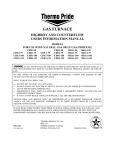
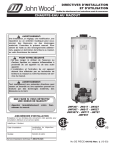

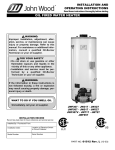
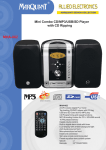
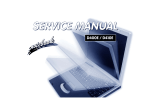
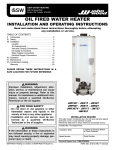
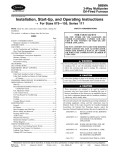
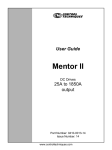
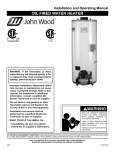
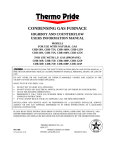
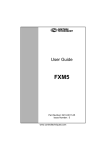
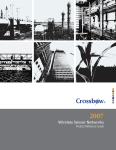

![010003E - [PROJECT.TOC] - TMG Construction Corporation](http://vs1.manualzilla.com/store/data/006000704_1-51daa2ac67e6ebfb9337b1b072f623df-150x150.png)
